Growing Sage Indoors can seem daunting, but trust me, it’s easier than you think! Imagine having fresh, aromatic sage right at your fingertips, ready to elevate your culinary creations or infuse your home with its earthy fragrance. No more last-minute trips to the grocery store or settling for dried herbs that lack that vibrant flavor.
Sage, with its velvety leaves and distinctive aroma, has a rich history. For centuries, it’s been revered not only for its culinary uses but also for its medicinal properties. Ancient Romans considered it a sacred herb, believing it could grant immortality. While we can’t promise eternal life, I can assure you that growing sage indoors will bring a touch of ancient wisdom and natural beauty into your home.
In today’s busy world, convenience is key. And that’s precisely why learning how to grow your own sage indoors is so valuable. It’s a sustainable way to access fresh herbs, reduce your carbon footprint, and connect with nature, even if you live in an apartment. Plus, it’s incredibly rewarding to nurture a plant from seed to harvest. So, let’s dive into these simple DIY tricks and hacks that will have you enjoying homegrown sage in no time!
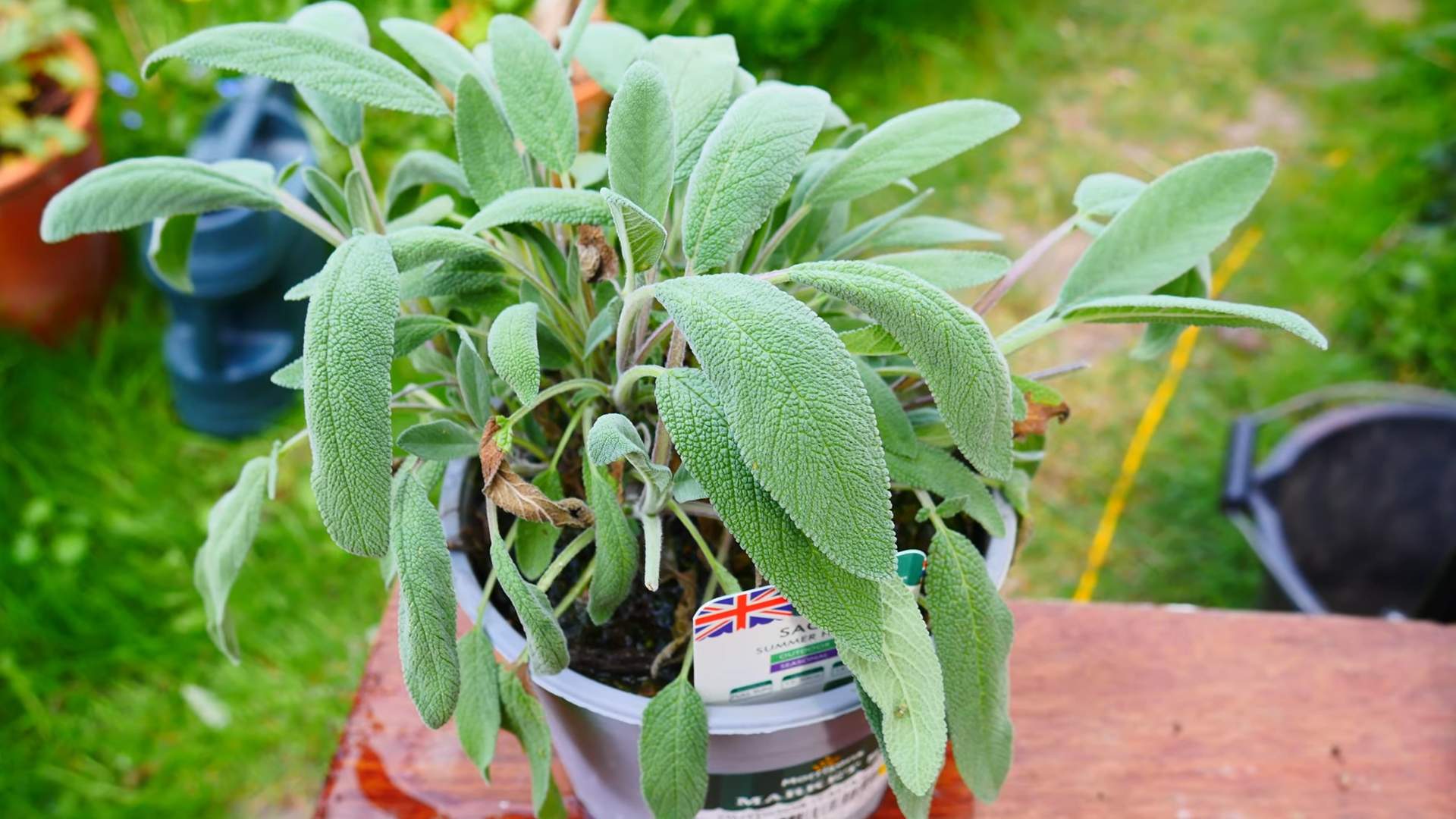
Growing Sage Indoors: A Comprehensive DIY Guide
Hey there, fellow plant enthusiasts! I’m so excited to share my experience and knowledge on growing sage indoors. It’s easier than you might think, and having fresh sage on hand for cooking or herbal remedies is incredibly rewarding. Let’s dive in!
Choosing the Right Sage Variety
First things first, not all sage varieties are created equal, especially when it comes to indoor growing. While common sage (Salvia officinalis) is the most popular and readily available, some varieties are better suited for containers.
* Common Sage (Salvia officinalis): This is your go-to sage for cooking and has a classic sage flavor. It’s relatively easy to grow indoors.
* Dwarf Sage (Salvia officinalis ‘Nana’): As the name suggests, this is a smaller variety, making it perfect for smaller pots and indoor spaces.
* Purple Sage (Salvia officinalis ‘Purpurascens’): Not only does it have a beautiful purple hue, but it also has a slightly milder flavor than common sage. It adds a pop of color to your indoor herb garden!
* Golden Sage (Salvia officinalis ‘Aurea’): This variety boasts golden-yellow leaves and a slightly different flavor profile. It’s a bit more sensitive than common sage, so keep that in mind.
I personally recommend starting with common sage or dwarf sage if you’re a beginner. They’re the most forgiving and will give you a good foundation for growing other varieties later on.
Gathering Your Supplies
Before we get our hands dirty, let’s make sure we have everything we need. Here’s a checklist:
* Sage Seeds or a Sage Plant: You can start from seeds or purchase a small sage plant from a nursery. Starting from seeds takes longer, but it’s more budget-friendly.
* Pot: Choose a pot that’s at least 6 inches in diameter and has drainage holes. Good drainage is crucial for preventing root rot. Terracotta pots are a great option because they allow the soil to breathe.
* Potting Mix: Use a well-draining potting mix specifically formulated for herbs or vegetables. Avoid using garden soil, as it can be too heavy and compact for container gardening.
* Grow Lights (Optional but Recommended): Sage needs plenty of sunlight, so if you don’t have a sunny windowsill, invest in a grow light.
* Watering Can or Spray Bottle: For watering your sage.
* Fertilizer (Optional): A balanced liquid fertilizer can help boost growth, but it’s not essential.
* Small Gardening Tools: A trowel for planting and small scissors or pruning shears for harvesting.
Planting Your Sage
Now for the fun part! Let’s get our sage planted.
Starting from Seeds:
1. Prepare the Pot: Fill your pot with potting mix, leaving about an inch of space at the top. Gently pat down the soil.
2. Sow the Seeds: Sprinkle the sage seeds evenly over the surface of the soil. You don’t need to bury them too deep; just lightly press them into the soil.
3. Water Gently: Use a spray bottle to mist the soil. You want to keep the soil moist but not waterlogged.
4. Provide Light and Warmth: Place the pot in a warm, sunny location or under a grow light. Sage seeds need warmth to germinate.
5. Be Patient: Germination can take anywhere from 10 to 21 days. Keep the soil consistently moist during this time.
6. Thin Seedlings: Once the seedlings emerge and have a few sets of true leaves, thin them out, leaving only the strongest seedlings in the pot. Space them a few inches apart.
Planting a Sage Plant:
1. Prepare the Pot: Fill your pot with potting mix, leaving about an inch of space at the top.
2. Remove the Plant from its Container: Gently squeeze the sides of the nursery pot to loosen the plant. Carefully remove the plant, being mindful not to damage the roots.
3. Loosen the Roots: Gently loosen the roots with your fingers. This will encourage them to spread out and establish themselves in the new pot.
4. Plant the Sage: Place the sage plant in the center of the pot. Make sure the top of the root ball is level with the soil surface.
5. Fill with Soil: Fill in the remaining space around the plant with potting mix. Gently pat down the soil.
6. Water Thoroughly: Water the plant thoroughly until water drains out of the drainage holes.
Caring for Your Indoor Sage
Once your sage is planted, it’s time to provide it with the care it needs to thrive.
Light:
Sage needs at least 6-8 hours of sunlight per day. If you don’t have a sunny windowsill, use a grow light. Place the grow light a few inches above the plant. I’ve found that using a timer for my grow lights helps me maintain a consistent light schedule.
Watering:
Hey there, fellow plant enthusiasts! I’m so excited to share my experience and knowledge on growing sage indoors. It’s easier than you might think, and having fresh sage on hand for cooking or herbal remedies is incredibly rewarding. Let’s dive in!
Choosing the Right Sage Variety
First things first, not all sage varieties are created equal, especially when it comes to indoor growing. While common sage (Salvia officinalis) is the most popular and readily available, some varieties are better suited for containers.
* Common Sage (Salvia officinalis): This is your go-to sage for cooking and has a classic sage flavor. It’s relatively easy to grow indoors.
* Dwarf Sage (Salvia officinalis ‘Nana’): As the name suggests, this is a smaller variety, making it perfect for smaller pots and indoor spaces.
* Purple Sage (Salvia officinalis ‘Purpurascens’): Not only does it have a beautiful purple hue, but it also has a slightly milder flavor than common sage. It adds a pop of color to your indoor herb garden!
* Golden Sage (Salvia officinalis ‘Aurea’): This variety boasts golden-yellow leaves and a slightly different flavor profile. It’s a bit more sensitive than common sage, so keep that in mind.
I personally recommend starting with common sage or dwarf sage if you’re a beginner. They’re the most forgiving and will give you a good foundation for growing other varieties later on.
Gathering Your Supplies
Before we get our hands dirty, let’s make sure we have everything we need. Here’s a checklist:
* Sage Seeds or a Sage Plant: You can start from seeds or purchase a small sage plant from a nursery. Starting from seeds takes longer, but it’s more budget-friendly.
* Pot: Choose a pot that’s at least 6 inches in diameter and has drainage holes. Good drainage is crucial for preventing root rot. Terracotta pots are a great option because they allow the soil to breathe.
* Potting Mix: Use a well-draining potting mix specifically formulated for herbs or vegetables. Avoid using garden soil, as it can be too heavy and compact for container gardening.
* Grow Lights (Optional but Recommended): Sage needs plenty of sunlight, so if you don’t have a sunny windowsill, invest in a grow light.
* Watering Can or Spray Bottle: For watering your sage.
* Fertilizer (Optional): A balanced liquid fertilizer can help boost growth, but it’s not essential.
* Small Gardening Tools: A trowel for planting and small scissors or pruning shears for harvesting.
Planting Your Sage
Now for the fun part! Let’s get our sage planted.
Starting from Seeds:
1. Prepare the Pot: Fill your pot with potting mix, leaving about an inch of space at the top. Gently pat down the soil.
2. Sow the Seeds: Sprinkle the sage seeds evenly over the surface of the soil. You don’t need to bury them too deep; just lightly press them into the soil.
3. Water Gently: Use a spray bottle to mist the soil. You want to keep the soil moist but not waterlogged.
4. Provide Light and Warmth: Place the pot in a warm, sunny location or under a grow light. Sage seeds need warmth to germinate.
5. Be Patient: Germination can take anywhere from 10 to 21 days. Keep the soil consistently moist during this time.
6. Thin Seedlings: Once the seedlings emerge and have a few sets of true leaves, thin them out, leaving only the strongest seedlings in the pot. Space them a few inches apart.
Planting a Sage Plant:
1. Prepare the Pot: Fill your pot with potting mix, leaving about an inch of space at the top.
2. Remove the Plant from its Container: Gently squeeze the sides of the nursery pot to loosen the plant. Carefully remove the plant, being mindful not to damage the roots.
3. Loosen the Roots: Gently loosen the roots with your fingers. This will encourage them to spread out and establish themselves in the new pot.
4. Plant the Sage: Place the sage plant in the center of the pot. Make sure the top of the root ball is level with the soil surface.
5. Fill with Soil: Fill in the remaining space around the plant with potting mix. Gently pat down the soil.
6. Water Thoroughly: Water the plant thoroughly until water drains out of the drainage holes.
Caring for Your Indoor Sage
Once your sage is planted, it’s time to provide it with the care it needs to thrive.
Light:
Sage needs at least 6-8 hours of sunlight per day. If you don’t have a sunny windowsill, use a grow light. Place the grow light a few inches above the plant. I’ve found that using a timer for my grow lights helps me maintain a consistent light schedule.
Watering:
Water your sage when the top inch of soil feels dry to the touch. Avoid overwatering, as this can lead to root rot. When you water, water thoroughly until water drains out of the drainage holes. Let the soil dry out slightly between waterings. I usually check the soil moisture every few days.
Temperature:
Sage prefers temperatures between 60-70°F (15-21°C). Avoid placing your sage near drafts or extreme temperatures.
Humidity:
Sage prefers relatively low humidity. Avoid misting the leaves, as this can promote fungal growth. If your home is very dry, you can place a tray of water near the plant to increase humidity.
Fertilizing:
You can fertilize your sage every 2-4 weeks with a balanced liquid fertilizer. Follow the instructions on the fertilizer label. Avoid over-fertilizing, as this can burn the roots. I usually dilute the fertilizer to half strength to be on the safe side.
Pruning:
Pruning is essential for keeping your sage plant healthy and productive. Prune your sage regularly to encourage bushier growth. Pinch off the tips of the stems to promote branching. Remove any dead or yellowing leaves. I usually prune my sage every few weeks.
Pests and Diseases:
Sage is relatively pest-resistant, but it can be susceptible to aphids, spider mites, and whiteflies. Inspect your plant regularly for pests. If you find any pests, treat them with insecticidal soap or neem oil. Root rot is the most common disease affecting sage. To prevent root rot, make sure your pot has good drainage and avoid overwatering.
Harvesting Your Sage
The best part of growing sage is harvesting it! You can start harvesting sage leaves once the plant is established and has grown several inches tall.
1. Choose the Right Time: Harvest sage in the morning, after the dew has dried. This is when the leaves have the highest concentration of essential oils.
2. Use Sharp Scissors or Pruning Shears: Cut the stems just above a leaf node. This will encourage new growth.
3. Don’t Over-Harvest: Avoid removing more than one-third of the plant at a time. This can stress the plant and slow down growth.
4. Use Fresh or Dry: You can use fresh sage leaves immediately or dry them for later use. To dry sage, hang the stems upside down in a cool, dry place. Once the leaves are dry, store them in an airtight container.
Troubleshooting Common Problems
Even with the best care, you might encounter some problems when growing sage indoors. Here are some common issues and how to address them:
* Yellowing Leaves: This can be caused by overwatering, underwatering, or nutrient deficiencies. Check the soil moisture and adjust your watering accordingly. If the soil is dry, water thoroughly. If the soil is waterlogged, allow it to dry out before watering again. You can also fertilize your sage with a balanced liquid fertilizer.
* Leggy Growth: This is usually caused by insufficient light. Move your sage to a sunnier location or provide supplemental light with a grow light.
* Pests: Inspect your plant regularly for pests. If you find any pests, treat them with insecticidal soap or neem oil.
* Root Rot: This is caused by overwatering. Make sure your pot has good drainage and avoid overwatering. If your sage has root rot, you may need to repot it in fresh potting mix.
Enjoying Your Homegrown Sage
Now that you’ve successfully grown your own sage indoors, it’s time to enjoy the fruits (or rather, leaves) of your labor! Use fresh or dried sage in your favorite recipes, such as:
* Sage Butter: A classic pairing with pasta or gnocchi.
* Sage Stuffing: A must-have for Thanksgiving dinner.
* Sage Tea: A soothing and flavorful herbal tea.
*
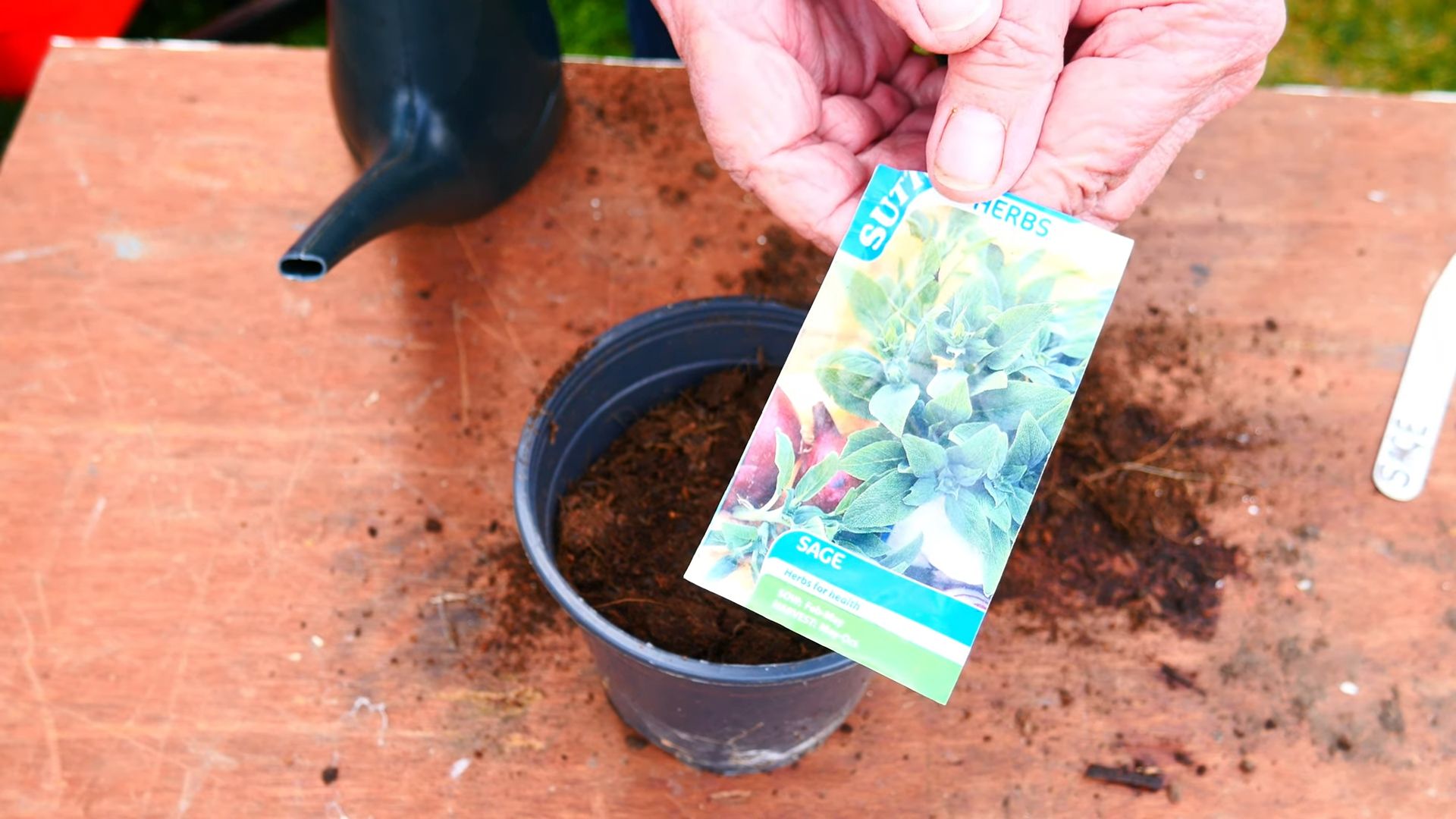
Conclusion
So, there you have it! Growing sage indoors isn’t just a possibility; it’s a rewarding and surprisingly simple endeavor that can bring a touch of the Mediterranean to your kitchen, regardless of your outdoor space. We’ve walked through the essential steps, from selecting the right variety and providing optimal lighting to ensuring proper watering and addressing potential challenges. But why should you bother with this DIY project?
The answer is multifaceted. First and foremost, having fresh sage readily available elevates your culinary creations. Imagine the aroma of freshly chopped sage infusing your Thanksgiving stuffing, or the subtle, earthy notes it adds to your roasted chicken. No more running to the store for wilted, overpriced herbs! The convenience alone makes it worthwhile.
Beyond the culinary benefits, growing sage indoors offers a therapeutic connection to nature. Nurturing a living plant, watching it thrive under your care, and harvesting its fragrant leaves can be incredibly grounding and stress-relieving. It’s a small but meaningful way to bring the outdoors in and cultivate a sense of calm in your home.
But the real magic lies in the control you have over the entire process. You can choose organic soil, avoid harmful pesticides, and ensure that your sage is grown in the healthiest possible environment. This translates to a more flavorful and nutritious herb for you and your family.
Don’t be afraid to experiment with different varieties of sage! While common sage (Salvia officinalis) is a great starting point, consider exploring other options like purple sage, golden sage, or even pineapple sage for a unique twist on flavor and aroma. You can also try propagating sage from cuttings of existing plants, expanding your indoor garden without spending a fortune.
Another fun variation is to incorporate your indoor sage into decorative arrangements. A small pot of sage on a windowsill adds a touch of rustic charm to any room. You can even combine it with other herbs like rosemary and thyme to create a miniature herb garden that’s both beautiful and functional.
Growing sage indoors is more than just a gardening project; it’s an investment in your culinary experiences, your well-being, and your connection to nature. It’s a chance to learn, experiment, and create something truly special.
We wholeheartedly encourage you to give it a try. Start small, be patient, and don’t be afraid to make mistakes. Gardening is a journey, and every challenge is an opportunity to learn and grow.
And most importantly, we want to hear about your experiences! Share your successes, your challenges, and your favorite ways to use your homegrown sage in the comments below. Let’s create a community of indoor sage enthusiasts and inspire each other to cultivate a greener, more flavorful life. What are you waiting for? Grab a pot, some soil, and a sage plant, and let the indoor gardening adventure begin!
Frequently Asked Questions (FAQ)
Q: What is the best type of sage to grow indoors?
A: While common sage (Salvia officinalis) is a reliable and readily available choice, several other varieties thrive indoors. Consider purple sage for its beautiful foliage and slightly milder flavor, or golden sage for its vibrant color and subtle sweetness. Pineapple sage offers a unique fruity aroma and is a fun option for teas and desserts. Ultimately, the best type of sage depends on your personal preferences and culinary needs. Experiment with different varieties to discover your favorites!
Q: How much sunlight does indoor sage need?
A: Sage thrives in bright, sunny conditions. Ideally, it needs at least 6-8 hours of direct sunlight per day. If you don’t have a south-facing window that provides sufficient light, consider using a grow light. Position the grow light a few inches above the plant and keep it on for 12-14 hours per day. Insufficient light can lead to leggy growth and reduced flavor.
Q: What kind of soil is best for growing sage indoors?
A: Sage prefers well-draining soil that is slightly alkaline. A good potting mix specifically formulated for herbs is an excellent choice. You can also create your own mix by combining equal parts of potting soil, perlite, and compost. Perlite helps improve drainage, while compost provides essential nutrients. Avoid using heavy garden soil, as it can become compacted and waterlogged.
Q: How often should I water my indoor sage plant?
A: Water your sage plant when the top inch of soil feels dry to the touch. Avoid overwatering, as this can lead to root rot. When you water, water thoroughly until excess water drains out of the bottom of the pot. Allow the soil to dry out slightly between waterings. During the winter months, when growth slows down, you may need to water less frequently.
Q: How do I fertilize my indoor sage plant?
A: Sage is not a heavy feeder, so you don’t need to fertilize it frequently. However, a light feeding every few months can help promote healthy growth. Use a balanced liquid fertilizer diluted to half strength. Avoid over-fertilizing, as this can lead to leggy growth and reduced flavor. Organic fertilizers, such as compost tea or fish emulsion, are also excellent options.
Q: How do I prune my indoor sage plant?
A: Pruning is essential for maintaining a healthy and productive sage plant. Regularly pinch back the tips of the stems to encourage bushier growth. You can also prune away any dead or damaged leaves. In the spring, you can prune the plant more heavily to remove any woody growth and promote new growth. Always use clean, sharp pruning shears to avoid spreading disease.
Q: How do I harvest sage leaves from my indoor plant?
A: You can start harvesting sage leaves once the plant is established and has several sets of leaves. Simply snip off the leaves with scissors or pruning shears. Harvest leaves in the morning, after the dew has dried, for the best flavor. You can use the fresh leaves immediately or dry them for later use.
Q: How do I dry sage leaves?
A: There are several ways to dry sage leaves. One method is to tie the stems together and hang them upside down in a cool, dry, and well-ventilated place. Another method is to spread the leaves out on a baking sheet and dry them in a low oven (around 170°F) for a few hours. You can also use a dehydrator to dry the leaves. Once the leaves are completely dry, store them in an airtight container in a cool, dark place.
Q: What are some common problems with growing sage indoors?
A: Some common problems with growing sage indoors include overwatering, underwatering, insufficient light, and pests. Overwatering can lead to root rot, while underwatering can cause the leaves to wilt and dry out. Insufficient light can result in leggy growth and reduced flavor. Pests such as aphids and spider mites can also attack sage plants. Regularly inspect your plant for signs of pests and take appropriate action if necessary.
Q: Can I propagate sage from cuttings?
A: Yes, propagating sage from cuttings is a relatively easy and effective way to expand your indoor herb garden. Take a 4-6 inch cutting from a healthy stem, removing the lower leaves. Dip the cut end in rooting hormone and plant it in a pot filled with well-draining potting mix. Keep the soil moist and place the pot in a warm, bright location. Roots should develop within a few weeks. Once the cutting has established roots, you can transplant it into a larger pot.

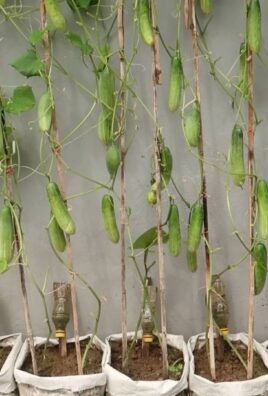
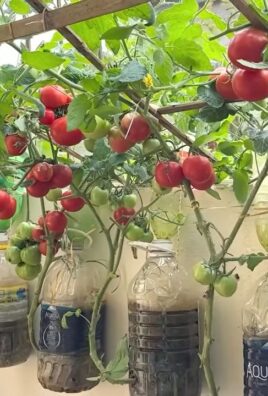
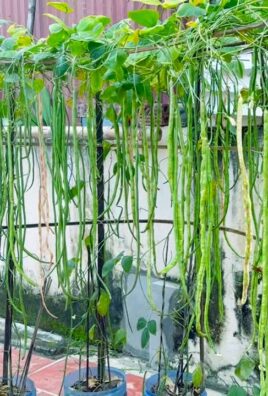
Leave a Comment